As brands strategize about securing long-term loyalty from their customers, there is one important thing to know: Earning customer loyalty is getting harder.
According to our 2023 Loyalty Programs Data Study: What Brands Can Do to Bridge the Engagement Gap, 73% of consumers agree that their loyalty is more difficult for a retailer to maintain than ever before.
That figure is up from 68% in 2022.
Based on the data study, this article will focus on where some of the shortcomings exist in current loyalty programs and five opportunities for brands to address these issues and boost customer engagement.
1. Personalize Your Loyalty Program Through Zero-Party Data
Ninety percent of consumers agree that in general, when it comes to being personalized to their preferences, most loyalty programs have room for improvement.
Zero- and first-party data are important for brands to collect and use to create more personalized experiences.
Zero-party data is valuable to your brand because it comes directly from your customers. They willingly share with your brand things like their communication preferences, product preferences, purchase intentions, personal context, customized account configurations and how they want to be recognized by your brand.
First-party data is data your company owns and collects directly from your customers as they interact across your website and various brand channels. This data relies on acquiring consent from customers, such as when they fill out a form to download a whitepaper or agree to have their browsing behavior tracked when visiting a website.
How do you get this data because it can be challenging due to regulatory and privacy issues?
Using loyalty amplifiers is a great way to personalize the customer experience and collect valuable data.
Loyalty amplifiers such as trivia, polls, surveys or profilers are great tools for you to use to collect this data.
According to the 2023 Loyalty Amplifiers Data Study, in exchange for an incentive, 66% of consumers are likely to provide brands with more personal information and preferences to better personalize their loyalty program experience.
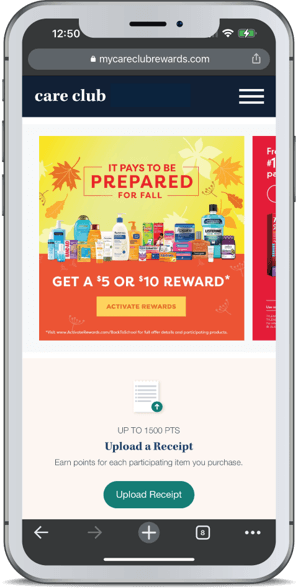
The Johnson & Johnson My Care Club Rewards loyalty program is a good example of a brand that aims to personalize the member experience. Read the Johnson & Johnson loyalty program case study here.
Through My Care Club Rewards, member data is collected to personalize the experience and drive member engagement.
Members earn points for product purchases, reviewing products, taking polls about product usage in their lives and personalization actions that help define the program experience.
The program also rewards loyalty program members with helpful wellness tips for uploading receipts from purchases with Care Club’s participating brands and for writing reviews, responding to polls and sharing with friends.
Our takeaway: To better personalize the experience for your loyalty program members, find creative ways to make collecting data fun and engaging through polls, surveys and purchase data.
Most brands collect customer data, but not all brands leverage it to personalize the customer experience.
2. Differentiate Your Loyalty Program to Stand Out
Our loyalty program data shows that 83% of consumers belong to between one and six loyalty programs, which shows a significant jump from 71% in 2021.
But the engagement piece paints a different picture: 72% of consumers use 50% or less of their traditional loyalty program memberships. And 31% of consumers use only 25% of their loyalty program memberships.
And 91% of consumers agree that many loyalty programs feel similar and are not that differentiated from others.
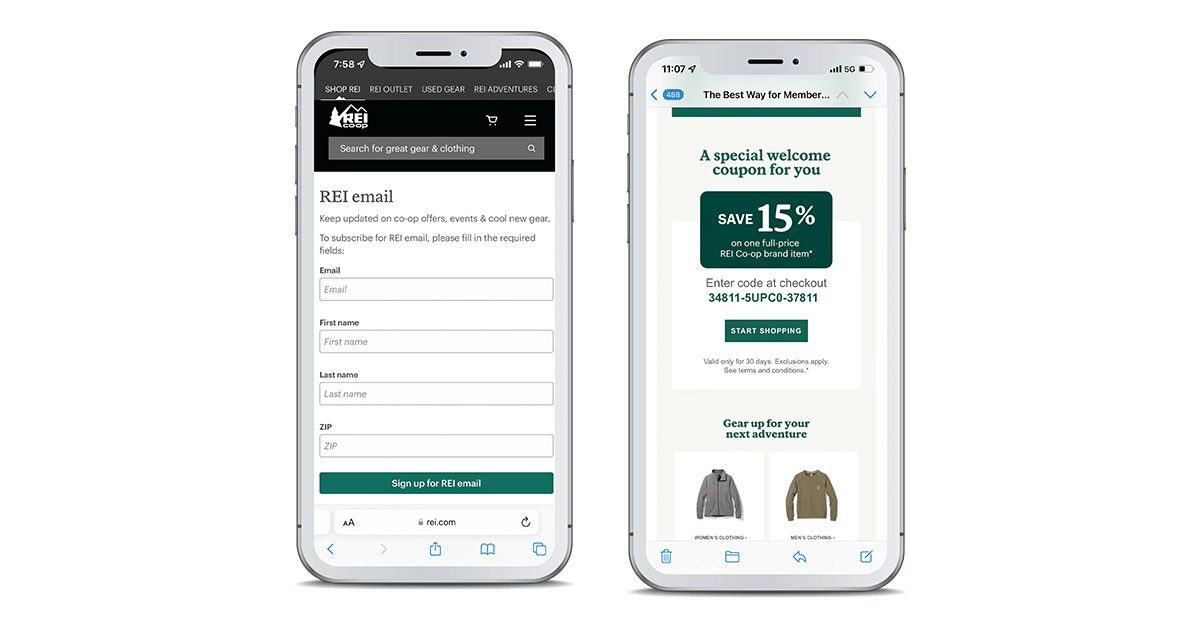
REI is a great example of a brand-driven loyalty program. Its customers are passionate about the outdoors, and for a mere $30 lifetime membership, the experiential benefits of this program make perfect sense.
Some of those experiential benefits include:
- Get special member pricing on REI Adventures trips. Choose from more than 150 experiences around the world
- Outside classes and events
- Insider tips
- Co-op Member Reward
- 100% Satisfaction Guarantee
- Member Free U.S. Standard Shipping
- Member Offers & Coupons
- Buy and Trade In Used Gear
- Up to 33% Off Rentals
- Member Events
For members of REI Co-op, they can enjoy various adventures offered around the world. Anyone can go on an adventure, but they are heavily discounted for members.
While the program offers transactional benefits, the star attraction is the experiential element. This allows members to participate in and experience the brand lifestyle, which builds lasting emotional connections.
Our takeaway: Consumers love to join loyalty programs, but then forget about them because there’s nothing that stands out from the competition.
This opportunity is where you can differentiate your loyalty program by highlighting your brand story in an interesting and engaging way.
While loyalty program enrollment is up, engagement is down. A big part of that is likely because most consumers agree loyalty programs feel the same. When it comes to loyalty programs, it’s important to stay true to your brand to stand out from the crowd.
3. Give Your Customers Options with a Tiered Loyalty Program
Seventy-four percent of consumers agree that they would engage more with brands that offered different tiers in their loyalty programs based on how much they spend per year.
When you can offer loyalty program members various tiers, you broaden your reach for them to engage and participate. This adds more appeal to your loyalty program.
This can come in the form of spend-based tiers where tier 1 is free to join and comes with standard benefits, tier 2 is accessed after spending a certain amount annually and comes with better benefits, and so on.
This can also be a premium loyalty tier, which is a subscription-based loyalty program that can be added to a tiered points-based program. Consumers pay a membership fee to join a premium loyalty program to receive exclusive benefits.
When you offer a tier on top of a traditional loyalty program, you give your best customers the option to self-identify, regardless of how much they spend each year.
Much like a traditional tiered loyalty program, the premium loyalty program tier offers greater benefits for someone who spends more and will reward them more, but they also reward people who shop less frequently.
Consider that 74% of consumers are likely to invest in a brand’s premium loyalty program if they already belong to that brand’s traditional loyalty program.
Seventy-seven percent of consumers would still want to remain a member of a brand’s free loyalty program if they’re thinking of canceling their premium loyalty membership because they’re not getting enough value out of it.
This is why it’s important to offer both types of programs. If a customer cancels a premium loyalty membership, the brand does not lose them entirely. They are still in the loyalty ecosystem.
When you combine a points-based loyalty program with a premium tier, you’re giving customers options and the freedom to move within your loyalty ecosystem.
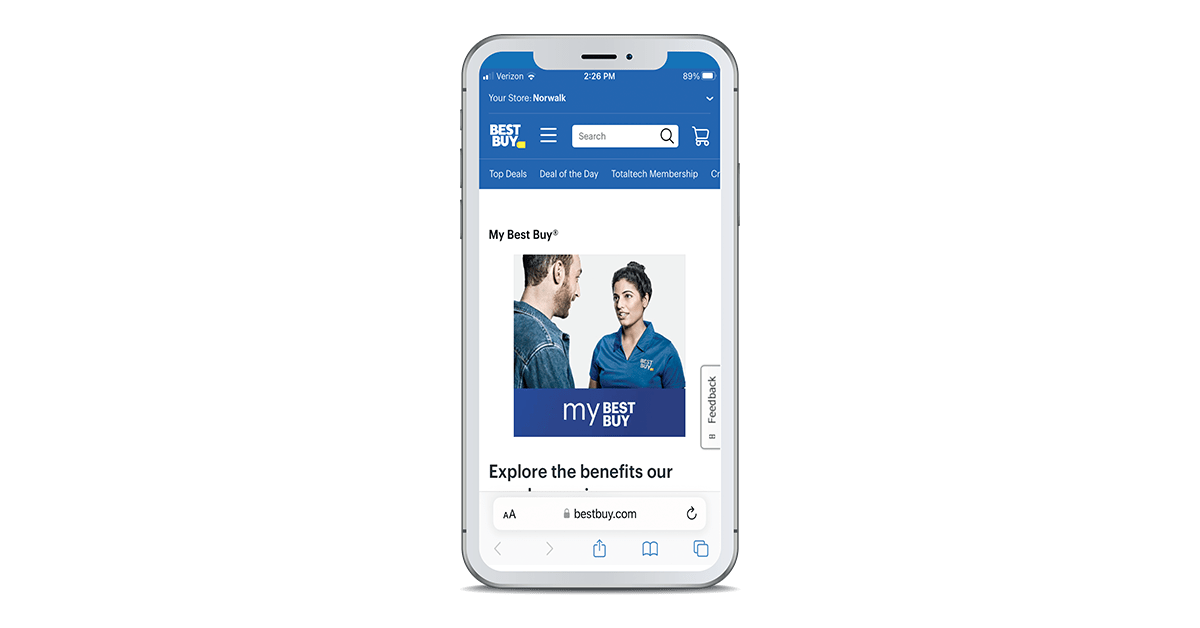
In May Best Buy unveiled three membership options — My Best Buy Memberships™ — that give customers more freedom to choose a membership that fits their technology needs, budget and lifestyle.
One of these options includes a new tier, at a more affordable price, which offers exclusive prices and access to highly anticipated product releases.
The three memberships are: My Best Buy™, My Best Buy Plus™ and My Best Buy Total™.
Each membership tier has a different set of benefits – ranging from members-only pricing and deals, access to exclusive sales and events, 24/7 tech support, product protection, free shipping and more – and at different price points, giving customers the ability to choose an option that best fits the convenience, value, support and protection they’re looking for.
Key takeaway: Just like consumers have numerous choices when it comes to choosing what brands to be loyal to, they also want options when they join your loyalty program.
Plus, offering a subscription-based loyalty tier gives your brand the ability to offer an amazing experience while also generating subscription revenue.
4. Offer More Point Redemption Options to Your Loyalty Program Members
Consumers want to participate in your points-based loyalty program, but they want more options for redemption.
Consider that 67% of consumers want more options for what they can redeem their points for besides just coupons or discounts.
These are the top 5 rewards that consumers most likely want to redeem points for:
- Discounts on purchases (shopping, hotel, flights, etc.) — 80%
- Branded merchandise/swag — 32%
- Sweepstakes entries for the chance to win a prize — 30%
- Gift points to friends or family — 25%
- Customizable digital rewards (make your own wine labels, branded photo frame to use on social media, etc.) — 21%
While most consumers want to redeem their loyalty points for discounts, there are other rewards brands can offer to create more loyalty.
A significant number of consumers would redeem their points for branded swag or gift points to friends/family which certainly helps with brand awareness and advocacy.
More point redemption options translate to more interest and program engagement.
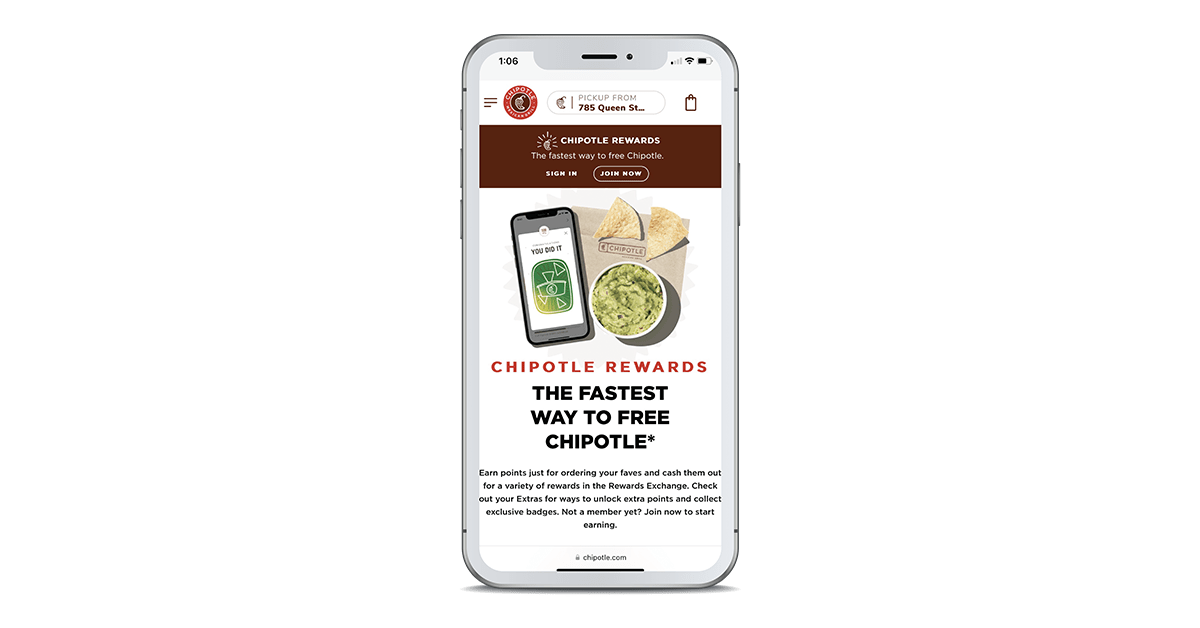
When Chipotle Rewards revamped its loyalty program in 2021, it gave its members more options and focused on more attainable rewards to keep them engaged. Chipotle Rewards members receive 10 points for every $1 spent in the restaurant, online or on the app.
A free entrée is 1,250 points. But for just 250 points, members can get an order of chips is just 250 points, a side of guacamole is 400 points and a bottled drink is 600 points.
Other options include:
- A children’s meal (900 points)
- A quesadilla (1,350 points)
- $20 worth of Chipotle merchandise (5,000). Customers who save up 8,750 points can get $35 in Chipotle merchandise.
Key takeaway: Offer more rewards that require a smaller amount of points to increase overall engagement with your program. Offering point redemption options in your loyalty program helps engage and retain members.
5 Make Your Loyalty Program Rewards Attainable
Consumers want more attainable loyalty program rewards.
Our research reveals that 74% of consumers agree that loyalty program rewards often feel unattainable, they require making too many purchases, require too many points and take too long to earn.
That statistic directly impacts customer engagement because nearly 90% of consumers said they engage with loyalty programs less often if they feel it takes too long to earn rewards.
In fact, 71% of consumers don’t want to save up large amounts of points for big-ticket items but have an opportunity to redeem smaller amounts of points for smaller rewards.
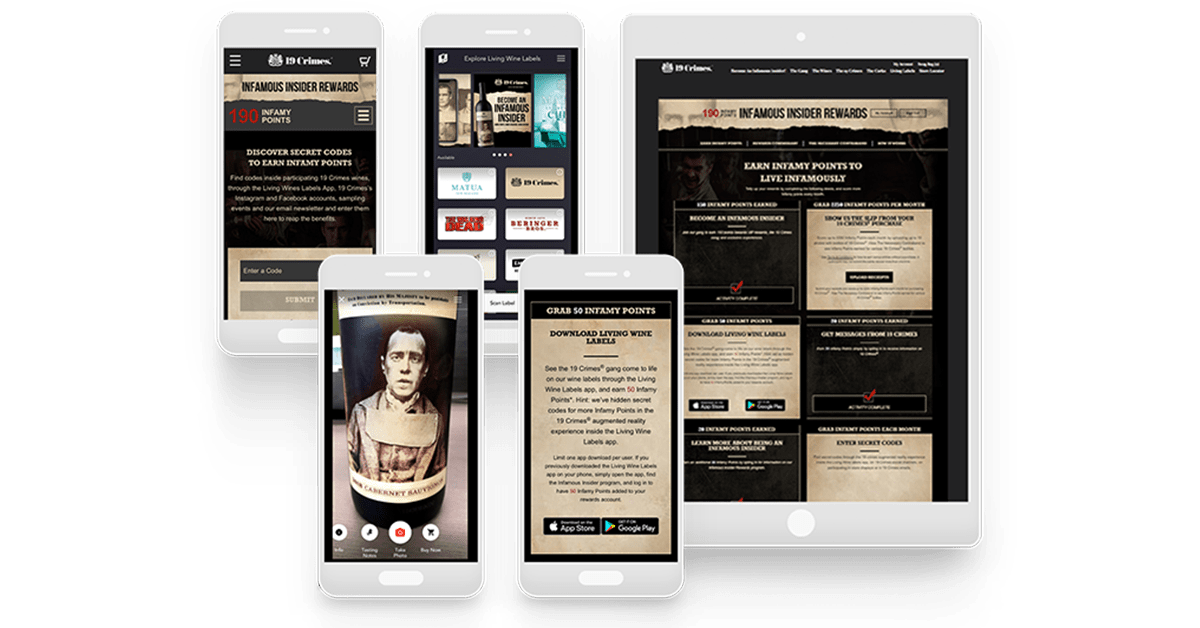
For example, 19 Crimes has a unique loyalty program called Infamous Insider Rewards that offers not only larger ticket rewards but also more attainable ones. Read the 19 Crimes loyalty program case study.
19 Crimes allows members to redeem smaller quantities of points for unique rewards rather than only requiring large numbers of points for bigger ticket items.
And it has a balanced program and certainly gives its members several alternate ways to earn points, and one unique way to redeem a lower amount is through its label-maker activity.
Infamous Insiders can redeem points to create custom wine labels that can then be added to a 19 Crimes bottle once printed. It’s brand- and product-centric and gives its loyalty members a very achievable reward.
19 Crimes members also complete tasks mapped out in the dashboard to accrue points they can use to enter a sweepstakes to win prizes such as swag, VIP perks and chances to win exclusive prizes.
This is a great way to have your loyalty program members use their points to enter a sweepstakes to win a prize or experience.
Key takeaway: Offer ways for your members to use their points sooner by creating more attainable rewards that will generate excitement and engagement.
Points are a big part of most loyalty programs, but one thing we know for sure is that almost three out of four customers feel that rewards are unattainable. They feel like rewards take too many points to earn.
Loyalty Is Hard So Make Your Program Stand Out
Just because loyalty is harder than ever doesn’t mean there aren’t ways to rise above the competition.
While a standout loyalty program requires more personalization and differentiation, today’s consumers expect more — from the ability to join different tiers to more options on how to redeem points to more attainable rewards.
If you’d like to learn more about where loyalty programs shine and where they fall short, straight from consumers, download our 2023 Loyalty Programs Data Study.